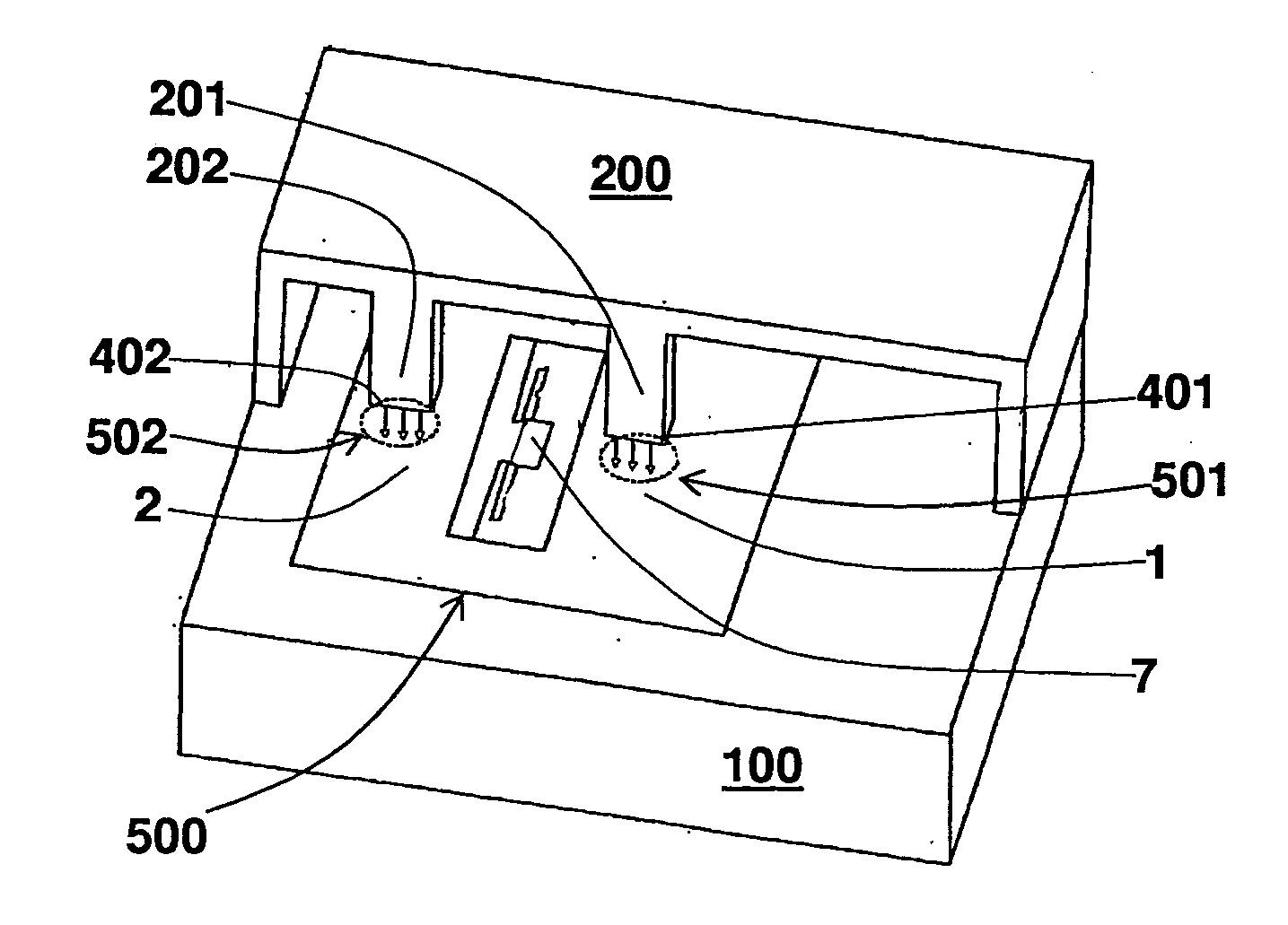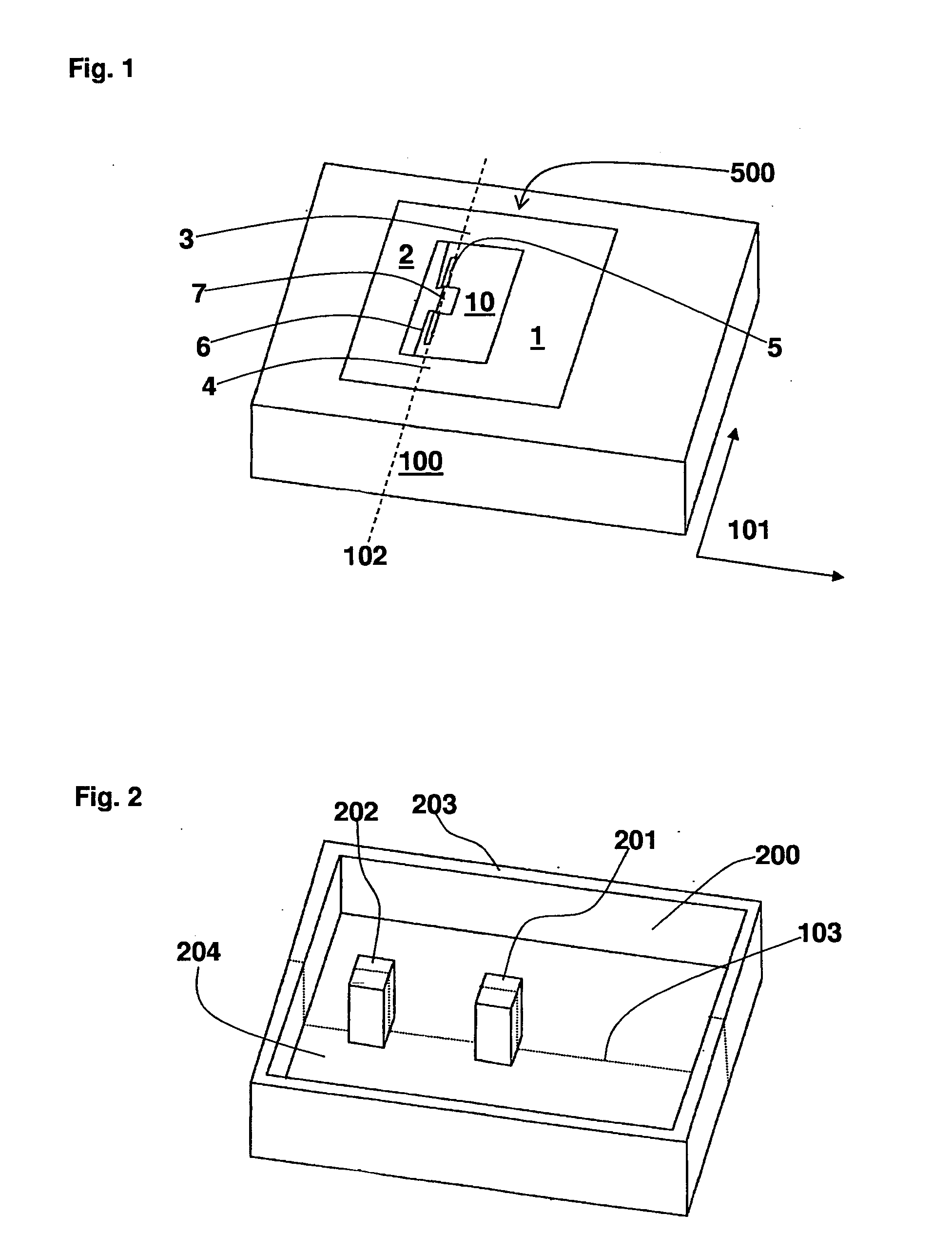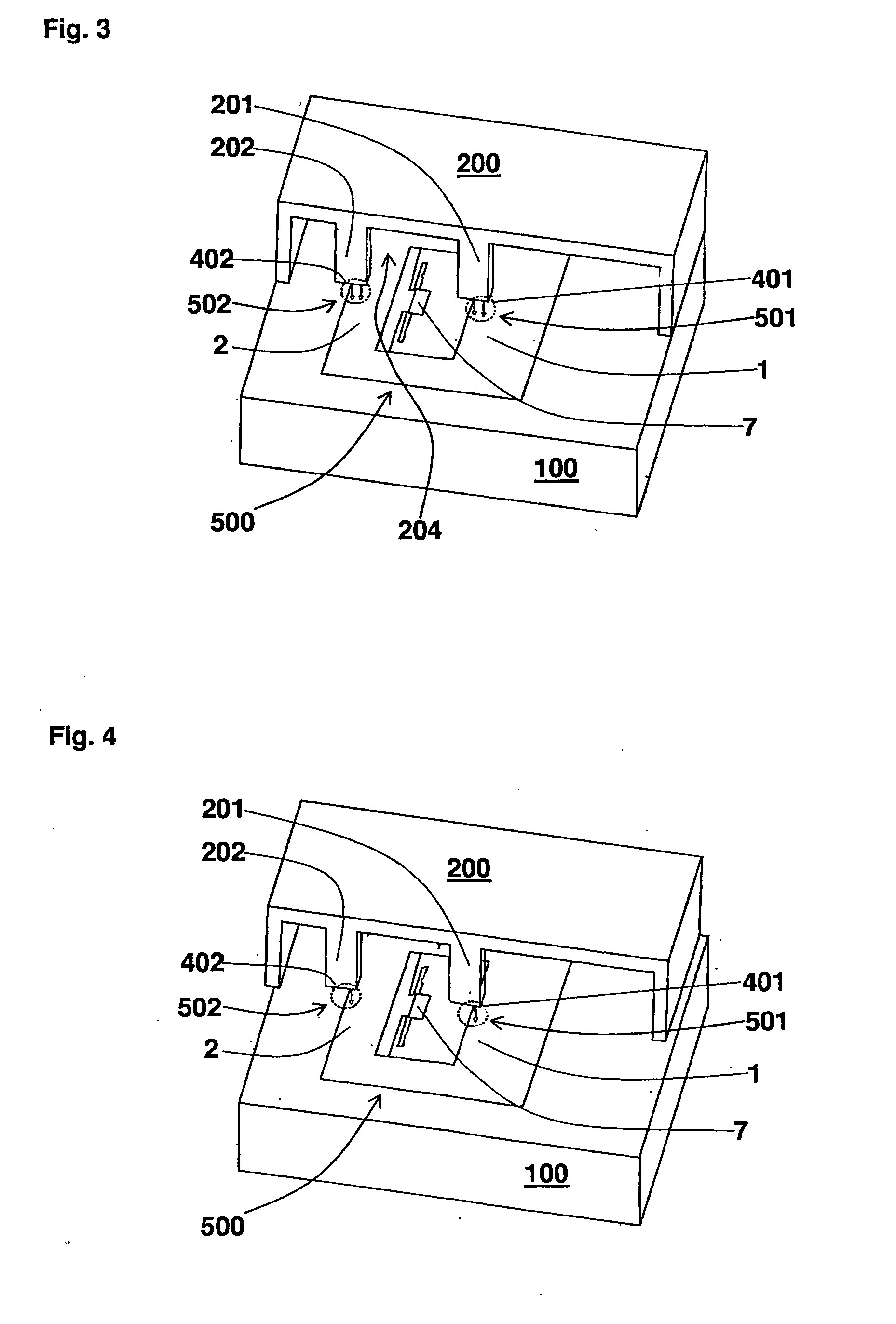Sensor and method for manufacturing a sensor
a sensor and sensor technology, applied in the field of sensors, can solve problems such as affecting the behavior of inertia weight, and achieve the effects of reducing manufacturing costs, reducing manufacturing costs, and reducing manufacturing tolerances when positioning the cap
- Summary
- Abstract
- Description
- Claims
- Application Information
AI Technical Summary
Benefits of technology
Problems solved by technology
Method used
Image
Examples
Embodiment Construction
[0020]A schematic perspective view of a substrate 100 and a seismic mass 500 of a sensor according to a first specific embodiment of the present invention is represented in FIG. 1, substrate 100 having a main extension plane 101 and completely enclosing seismic mass 500 in a plane parallel to main extension plane 101. Seismic mass 500 includes a first seismic partial mass 1 and a second seismic partial mass 2, first and second seismic partial masses 1, 2 being joined to one another by a first and a second web 3, 4. An open space 10 is provided between first and second seismic partial masses 1, 2 and between first and second webs 3, 4. Alternatively, open space 10 includes an area which is connected to the electrical potential of substrate 100. Situated in open space 10 is an anchoring element 7 which is connected to substrate 100. Seismic mass 500 is attached to anchoring element 7 using suspension springs 5, making a movement of seismic mass 500 relative to substrate 100 possible. ...
PUM
| Property | Measurement | Unit |
|---|---|---|
| size | aaaaa | aaaaa |
| seismic mass | aaaaa | aaaaa |
| area | aaaaa | aaaaa |
Abstract
Description
Claims
Application Information
 Login to View More
Login to View More - R&D
- Intellectual Property
- Life Sciences
- Materials
- Tech Scout
- Unparalleled Data Quality
- Higher Quality Content
- 60% Fewer Hallucinations
Browse by: Latest US Patents, China's latest patents, Technical Efficacy Thesaurus, Application Domain, Technology Topic, Popular Technical Reports.
© 2025 PatSnap. All rights reserved.Legal|Privacy policy|Modern Slavery Act Transparency Statement|Sitemap|About US| Contact US: help@patsnap.com



